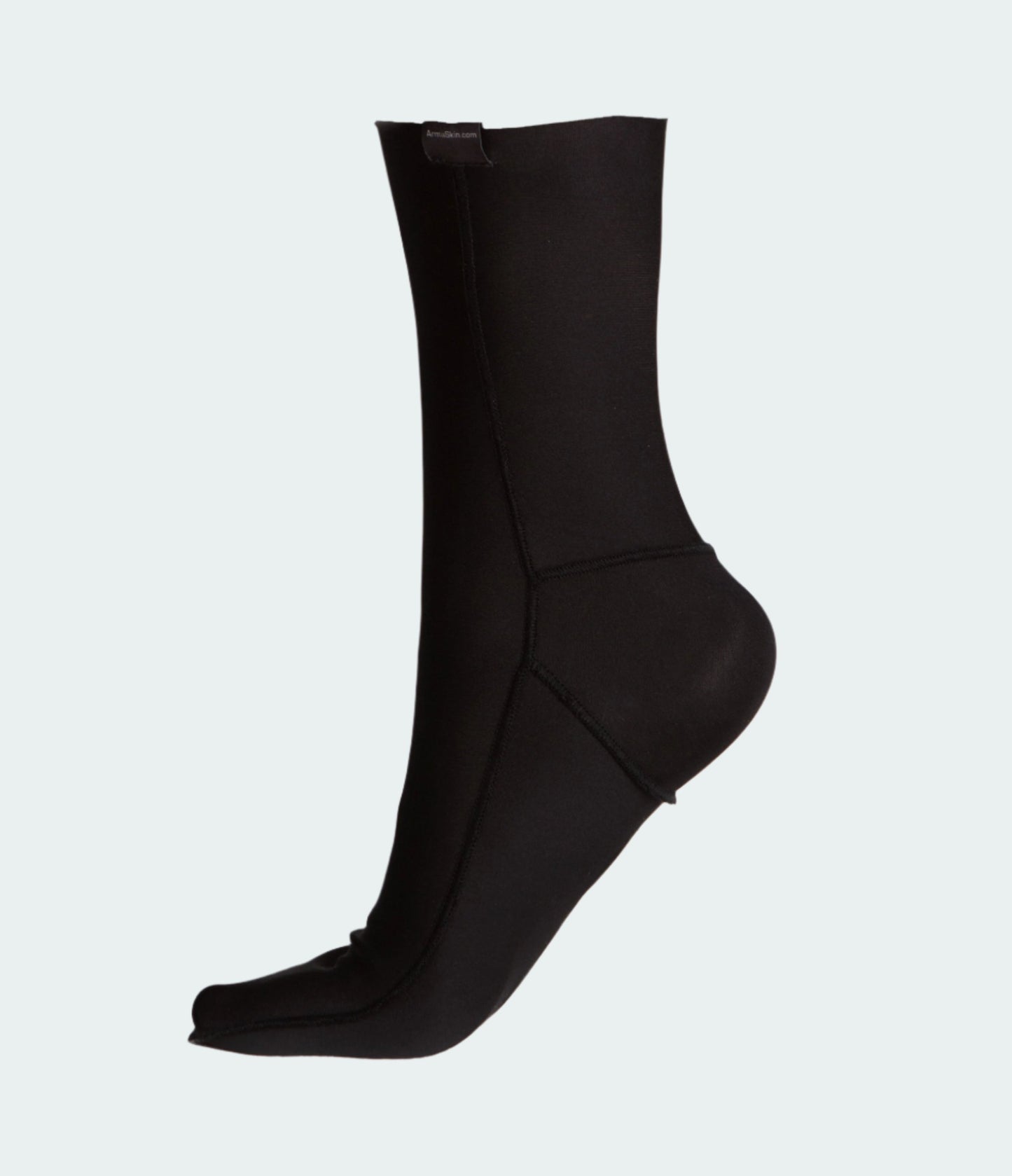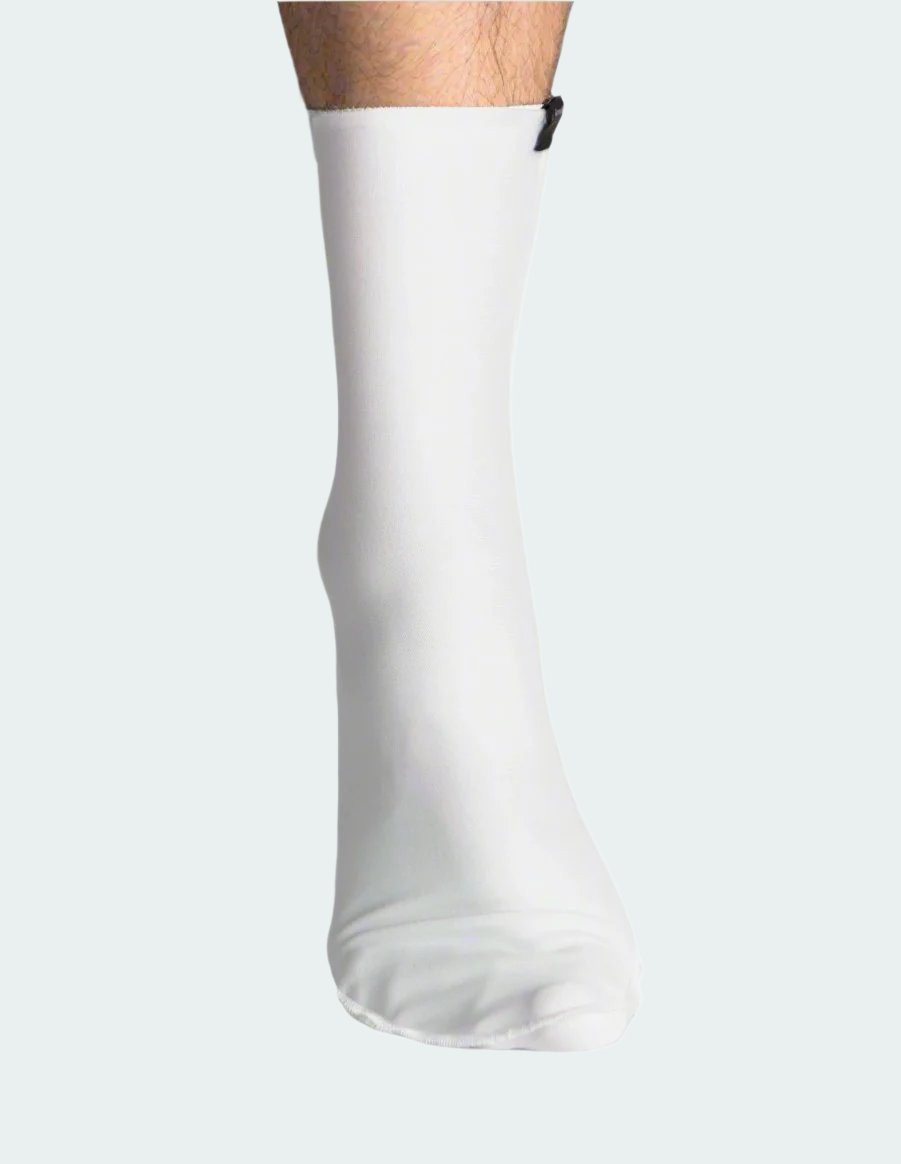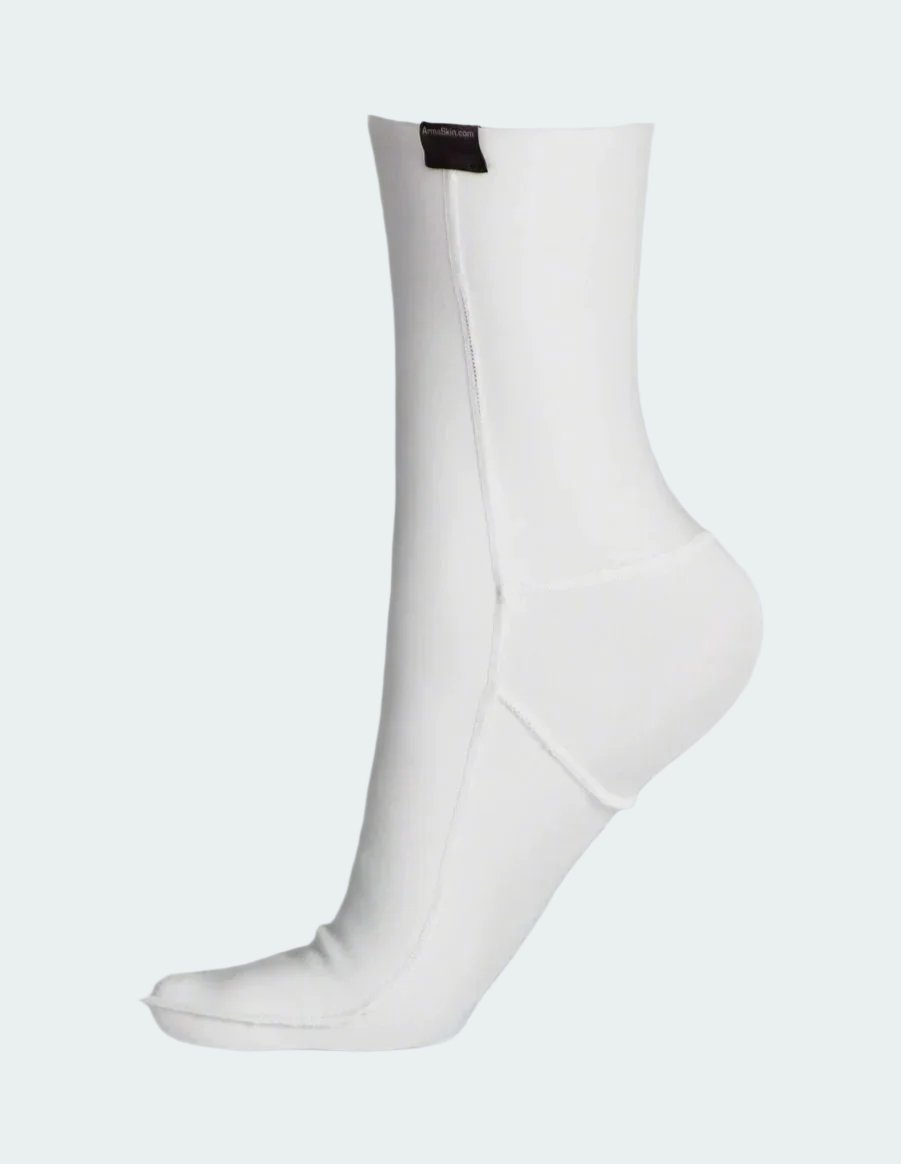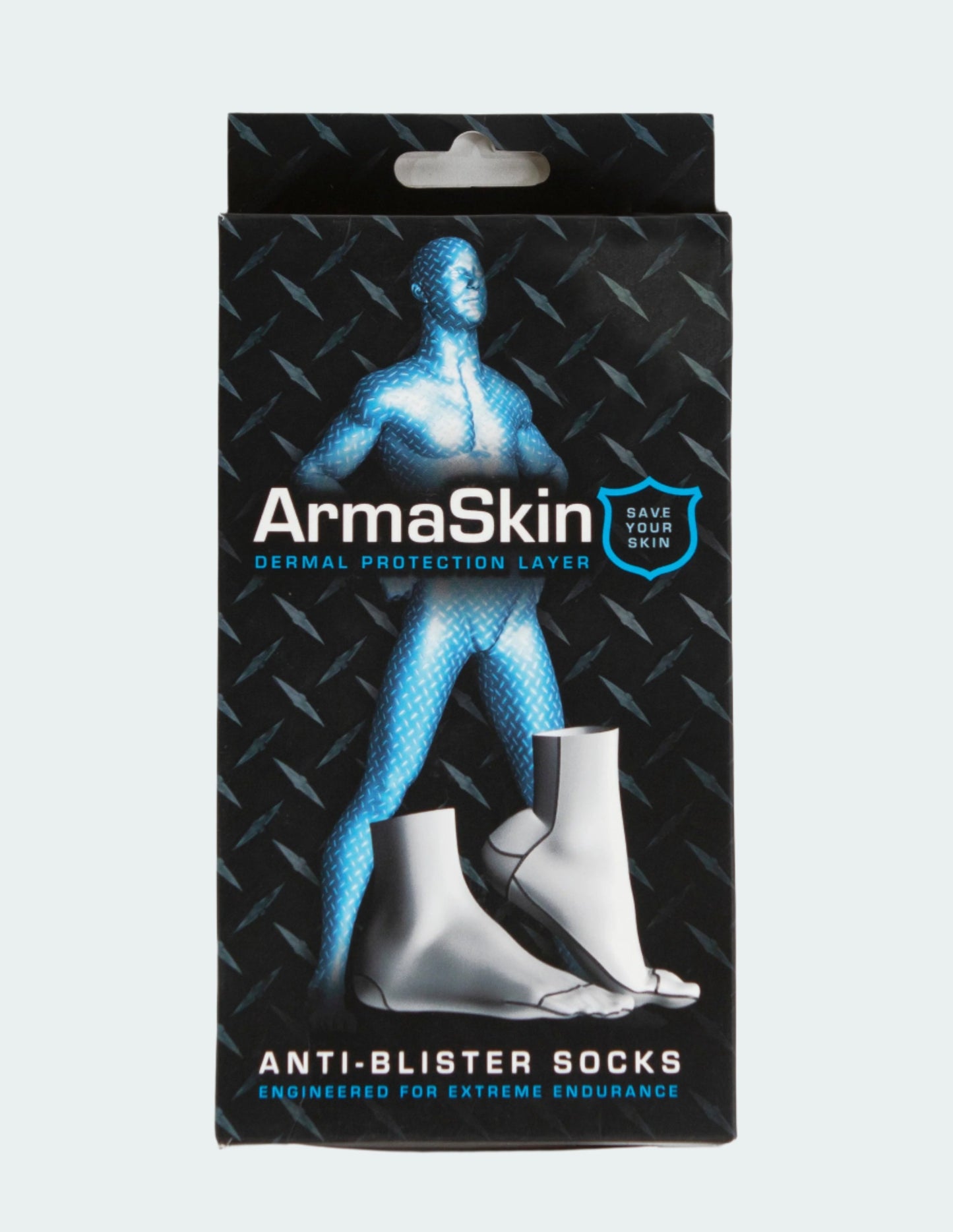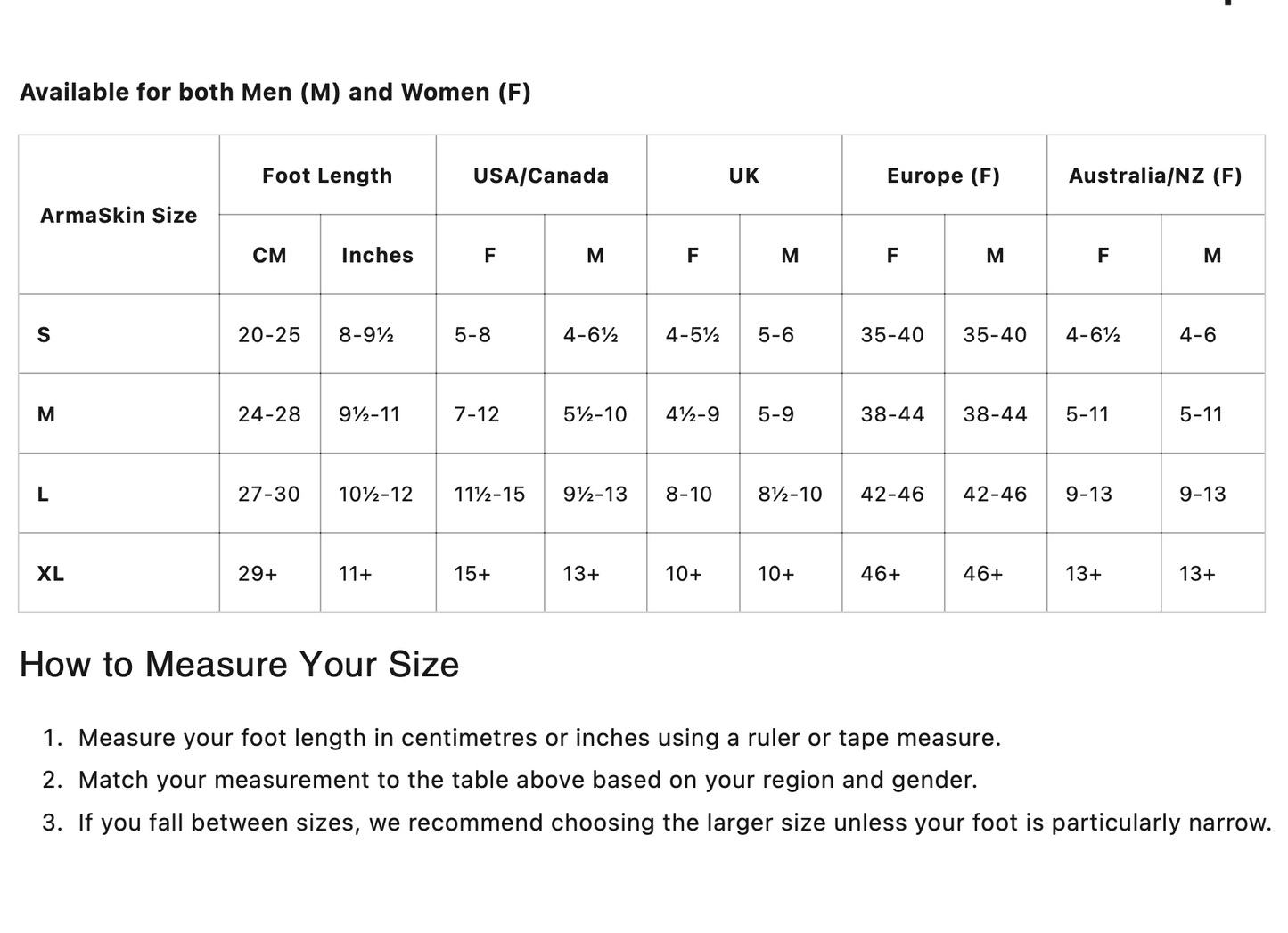If you’ve ever suffered the agony of a foot blister while hiking, running, or even just breaking in a new pair of shoes, you’ve probably asked yourself: “Would thicker socks have prevented this?” Or maybe you wondered if thin socks would have kept your feet cooler and drier, saving you the pain.
It’s one of the most common questions when it comes to foot care: Are thick or thin socks better for blisters? The short answer? It’s not just about thickness—it’s about how the sock is made, how it fits, and what it’s designed to do.
That’s why I always point people toward ArmaSkin anti-blister socks, which focus not on thickness but on friction reduction and moisture control—the two real culprits behind blister formation.
Let’s break it all down so you can make the best choice for your feet.
1. Why Blisters Form: The Real Problem Isn’t Sock Thickness
Before we dig into sock styles, we need to understand what actually causes blisters. Spoiler alert: It’s not simply down to sock thickness.
Blisters are primarily caused by:
-
Friction – repeated rubbing of skin against fabric or footwear
-
Moisture – Sweat softens the skin and increases vulnerability
-
Heat – excess warmth causes the skin to swell and become more prone to irritation
-
Poor fit – either in shoes or socks, movement equals friction
So, while sock thickness can play a role in these factors, the core issue is how well your sock manages friction and moisture
2. Thick Socks: Pros, Cons, and Misconceptions
Thick socks have long been a go-to for hikers and outdoor workers. They offer cushioning, insulation, and a feeling of protection. But are they the best for blister prevention?
Benefits of Thick Socks:
-
More cushioning to reduce pressure points
-
Warmth in cold environments
-
Padding around high-friction areas like heels and toes
Drawbacks of Thick Socks:
-
More heat buildup, especially in warm conditions
-
Add more moisture if they’re not moisture-wicking
-
Bulk that may create a tighter shoe fit, leading to increased friction
In other words, thick socks are not automatically better. If they trap sweat or shift during movement, they can worsen the blister risk.
Best Use Cases for Thick Socks:
-
Cold-weather hikes
Don’t Let Blisters Slow You Down!
Discover the ultimate solution with ArmaSkin Anti-Blister Socks. Designed with advanced friction-reducing technology, these socks keep your feet dry, comfortable, and blister-free – no matter the challenge.
Shop Now -
Trekking with well-ventilated boots
-
Situations where extra padding is needed
But again, thickness does not guarantee protection—performance material and sock fit are far more important.
3. Thin Socks: Lightweight, But Are They Enough?
Thin socks are often chosen for running, warm-weather trekking, or minimalist footwear. They feel light, breathable, and unobtrusive.
Benefits of Thin Socks:
-
Better breathability, helping to keep feet cool
-
Less bulk, which improves shoe fit for some users
-
Faster drying in humid or hot conditions
Drawbacks of Thin Socks:
-
Less cushioning, so more direct pressure on the skin
-
Can wear out quickly under repetitive movement
-
May not prevent friction on their own unless engineered to do so
Thin socks can be a great option if they are made with high-performance, moisture-wicking fibres and have anti-friction technology. Cheap cotton varieties, however, are a one-way ticket to blister city.
4. The ArmaSkin Difference: It’s Not About Thickness; It’s About Technology
Here’s where ArmaSkin anti-blister socks change the game entirely.
Rather than asking “Thick or thin?”, the better question is: “What prevents blisters?”
ArmaSkin socks solve the core blister causes by offering:
-
Friction-reducing inner layer – a soft, skin-hugging surface that eliminates rubbing between your foot and sock.
-
Moisture-wicking, breathable materials actively draw sweat away, keeping skin dry and resilient.
-
Snug, secure fit – won’t bunch, slip, or shift during wear.
-
Layered system – friction is transferred between sock layers, not your skin and the shoe.
So whether you like thick outer socks or prefer a light shoe feel, ArmaSkin liner socks fit underneath and become your anti-blister shield.
These aren’t just socks—they’re wearable tech for your feet.
5. Real-World Scenarios: What Works Best for You?
Let’s look at a few real-life examples where sock thickness plays a role—and how ArmaSkin fits into each one.
Scenario 1: Multi-Day Hike in Varying Weather
-
Traditional thick wool socks = lots of warmth but also lots of sweat
-
Thin socks = breathable but not protective over long distances
-
ArmaSkin liner + your preferred outer sock = dry, friction-free feet with custom comfort
Scenario 2: Trail Running in Summer
-
Thick socks = too hot, risk of blisters from overheating
-
Thin socks = cooler, but may not prevent heel rubbing
-
ArmaSkin worn alone or with ultra-light outer sock = keeps your skin cool and friction-free
Scenario 3: Military or Tactical Use
-
Thick socks = heavy, can be good in boots but risk overheating
-
Thin socks = may bunch or wear out under heavy use
-
ArmaSkin socks are a standard kit for many serving members—they last, stay in place, and prevent blisters during extreme conditions
6. Why Sock Fit and Fabric Matter More Than Thickness
When we talk about “thick vs thin,” we’re often missing the more important discussion: sock material and fit. Here’s what to look for, regardless of thickness:
Key Sock Qualities for Blister Prevention:
-
Moisture-wicking fabric like Coolmax, merino blends, or ArmaSkin’s proprietary inner lining
-
Seamless or flat-stitched construction to avoid rubbing
-
Compression-style fit that hugs your foot and doesn’t move
-
Layering capability for flexibility in weather and terrain
The best blister prevention socks are built around performance, not just thickness.
7. Can You Combine Thick and Thin Socks?
Yes, and many do—this is exactly where ArmaSkin shines.
Designed as a liner sock, ArmaSkin is worn directly against your skin. You then add your preferred outer sock—whether thick, thin, or cushioned—to suit the conditions.
This layering approach means you get:
-
ArmaSkin’s friction reduction and moisture control
-
Your own sock’s padding or temperature control
Perfect synergy. No blisters. No compromises.
8. Testimonials: What Other People Have Learned
“I used to wear double-layer thick socks for every hike. Still got blisters. Switched to ArmaSkin under a lighter sock—problem solved.” — Dan, long-distance hiker.
“I race ultramarathons in hot weather. Thin socks alone weren’t enough. ArmaSkin gives me the protection I need without overheating.” — Rachel, endurance runner.
“In the army, we don’t have time for foot issues. ArmaSkin under a regulation sock = no blisters, period.” — Tom, infantry corporal
These stories aren’t rare. They’re part of why so many are turning to ArmaSkin’s anti-blister sock system over the old thick-vs-thin debate.
9. So, Are Thick or Thin Socks Better for Blisters?
Here’s the honest answer:
Neither is inherently better. A thick sock won’t save you if it traps sweat. A thin sock won’t help if it rubs the wrong way. The key lies in materials, design, and how the sock manages moisture and friction.
That’s why ArmaSkin is such a game-changer. It doesn’t just add or remove bulk—it adds intelligent design. Whether you prefer thick hiking socks or light running socks, ArmaSkin sits comfortably underneath and prevents the one thing you want to avoid most: blisters.
10. Final Thoughts: Choose Smart, Not Just Thick or Thin
Blisters can ruin your adventure, training, or workday. So, instead of relying on guesswork or sock thickness alone, choose a system that tackles the real causes of blisters head-on.
ArmaSkin anti-blister socks were created for this very purpose: to protect your feet through smart design, not just padding.
Ready to upgrade your foot care? Explore our full range of anti-blister socks today and find the combination that works for your feet, your activity, and your environment.
-
Learn more about ArmaSkin and how we’re redefining blister prevention.
-
Explore the full blister-prevention-socks guide.
-
Shop our anti-blister sock collection to find the right liner for your setup.
-
Discover our anti-blister liner socks for hiking, running, and everyday wear.








